We got the chance to hike to the top of Babia Góra which is one of the highest peaks in Poland. The name Babia Góra translates to Witches’ Mountain. During colder months winds and high altitude make the weather unpredictable and dangerous.
Just a month before our hike, a man was struck by lightning when an unexpected storm appeared. We heard from a local that he was descending the mountain because of the bad weather but did not make it back in time.
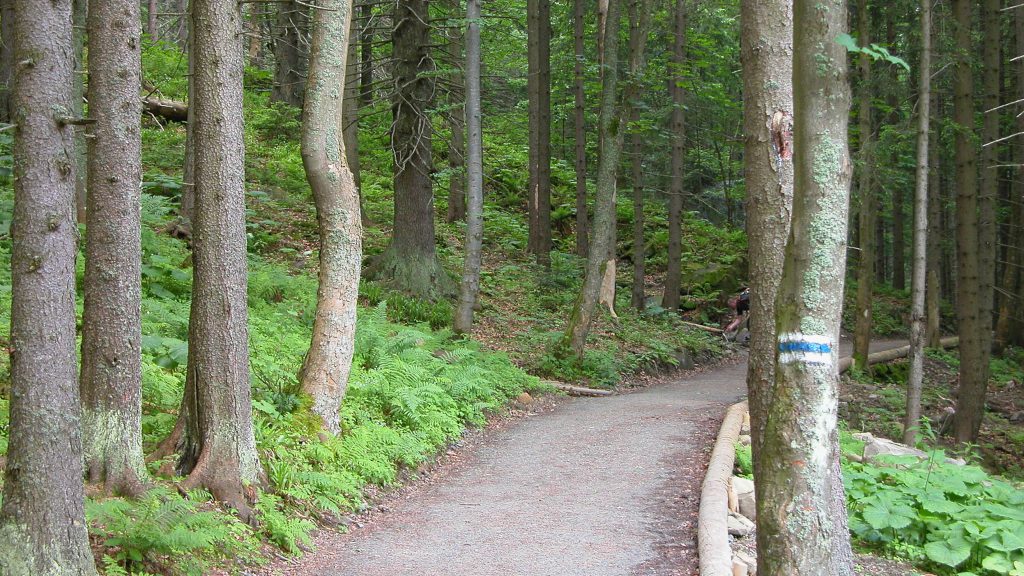
Started our hike on the blue trail which was very easy. It was a series of switchbacks up the base of the mountain with many places to get fresh water or cool down. Someone is washing their hands in the fresh mountain water up ahead.
Many trails in Poland are very well maintained and are present throughout the country. Seriously, there are trail markers everywhere, even in crowded cities. If you are looking to travel to a country with an excellent hiking culture and cheap food, then you should definitely visit Poland.
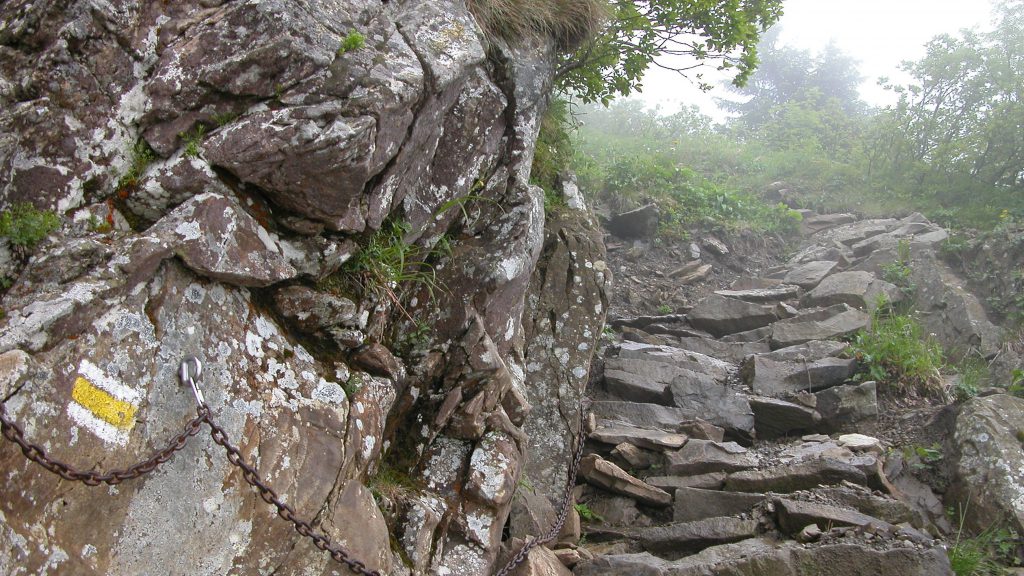
The yellow trail was much more difficult ascending 400 meters in one kilometer. This part of the hike was the most fun (scariest for my wife) because of the steep climb and interesting rocks. There were chains anchored to the walls of the mountain in certain areas to hold onto in case you lose your footing.
Many trails in Poland are free or accessible with a small fee. We are glad we decided to hike Babia Góra despite being hesitant at first. Several days of hiking back to back can be quite tiring but Babia Góra was worth it.
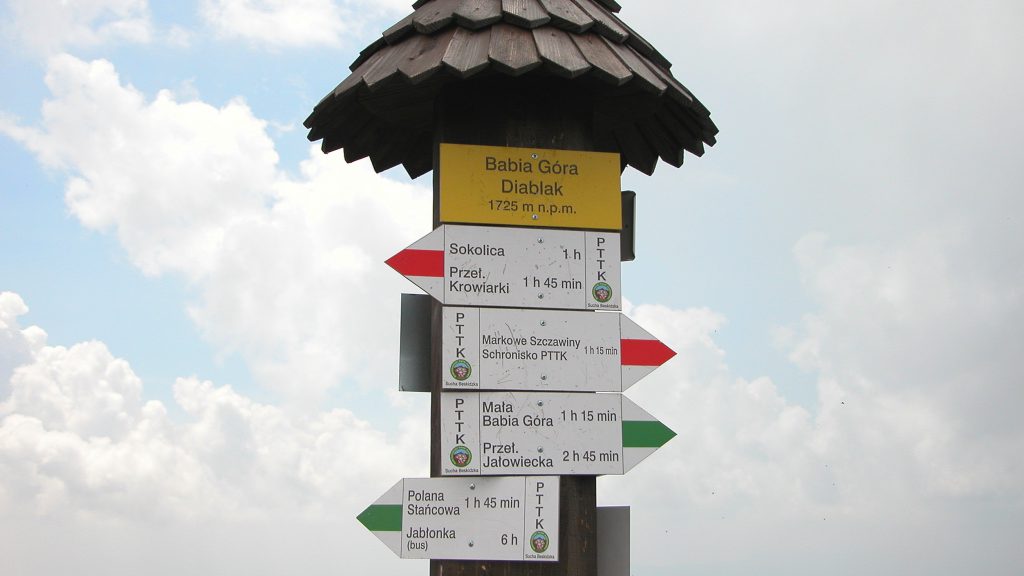
We made it to the peak. The sign says “Diablak” which means “Devil’s Peak”. The mountain is named this because past explorers saw the whirling winds surrounding the mountain and described it as the witch dancing with the devil. We had good weather on our hike but the swarms of flies that inhabit the mountain during warmer months were almost unbearable.
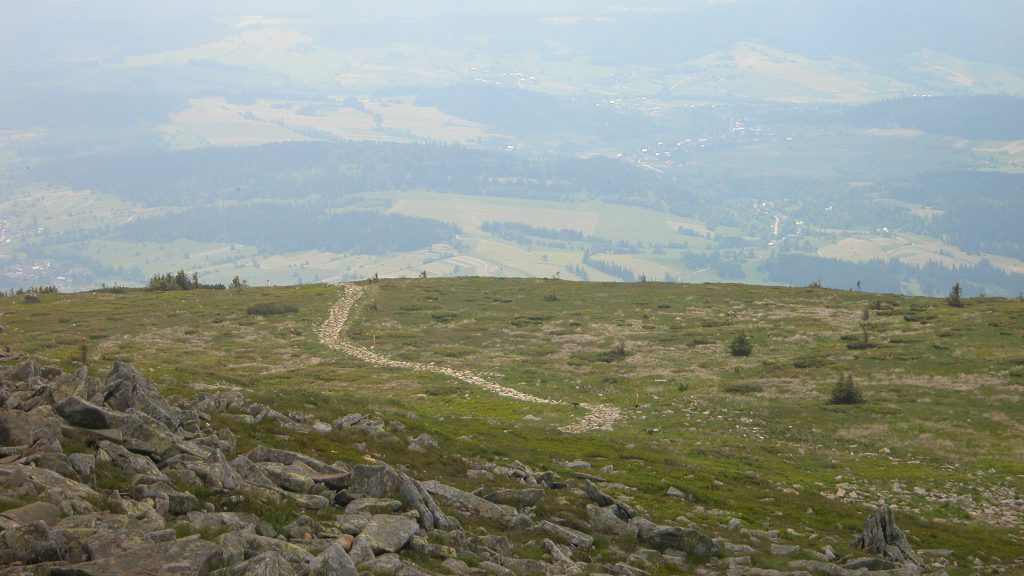
Thankfully we had good weather so we had a great view from the peak.
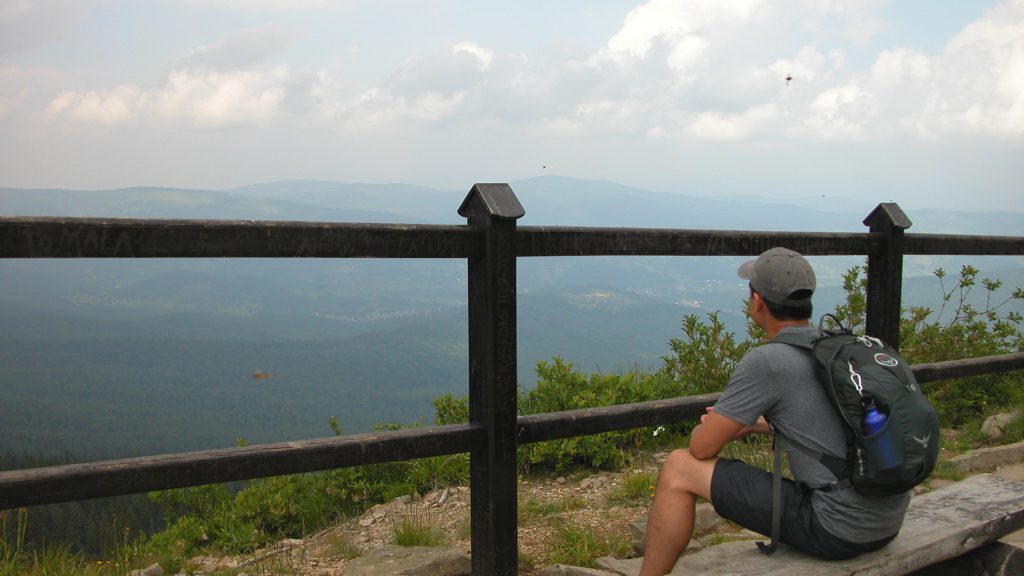
There are vantage points to take a break, but we didn’t stop too long.
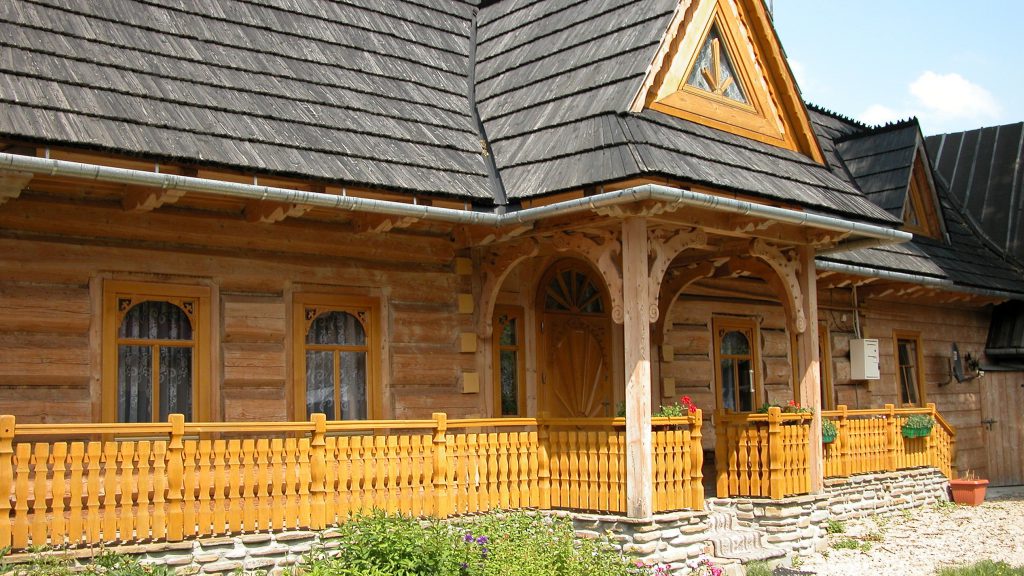
On the way from Babia Gora to our next destination we stopped to visit some of the oldest buildings in the region. The structure of the houses in this area were unique and a joy to look at just for their craftsmanship.
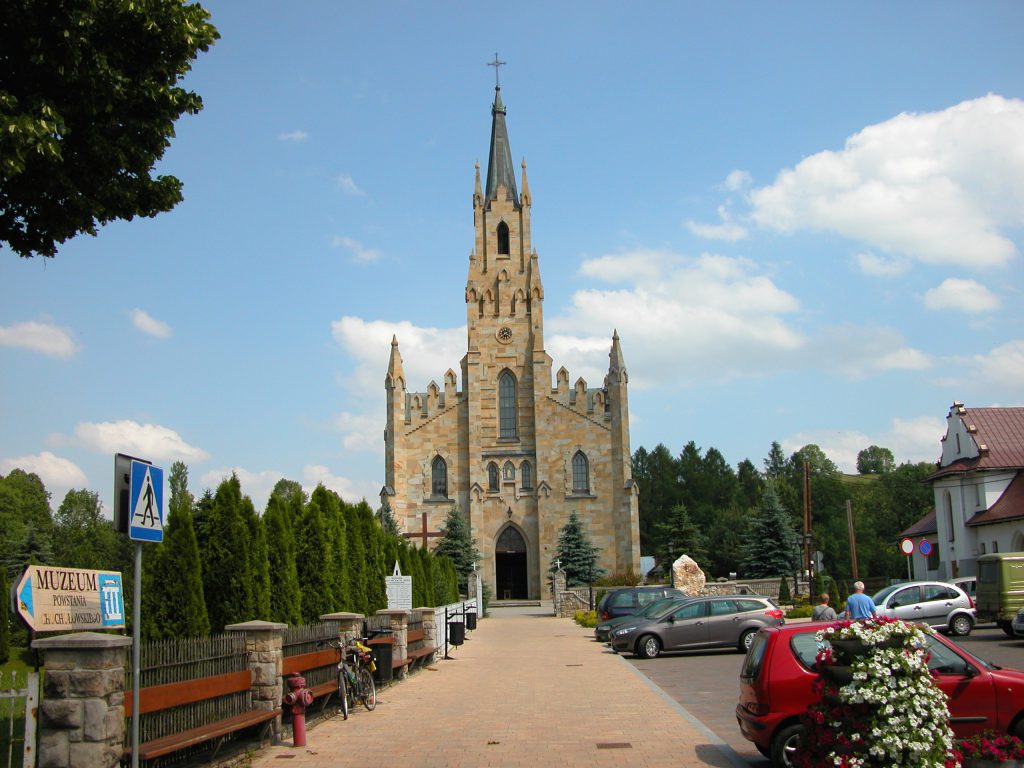
Although you may find grander churches in Europe, the churches in Poland have great history (and smaller crowds).
Babia Góra is a must if you are looking for a challenging hike.
The flora at higher altitudes don’t exist anywhere else and climbing over rubble was quite an experience.

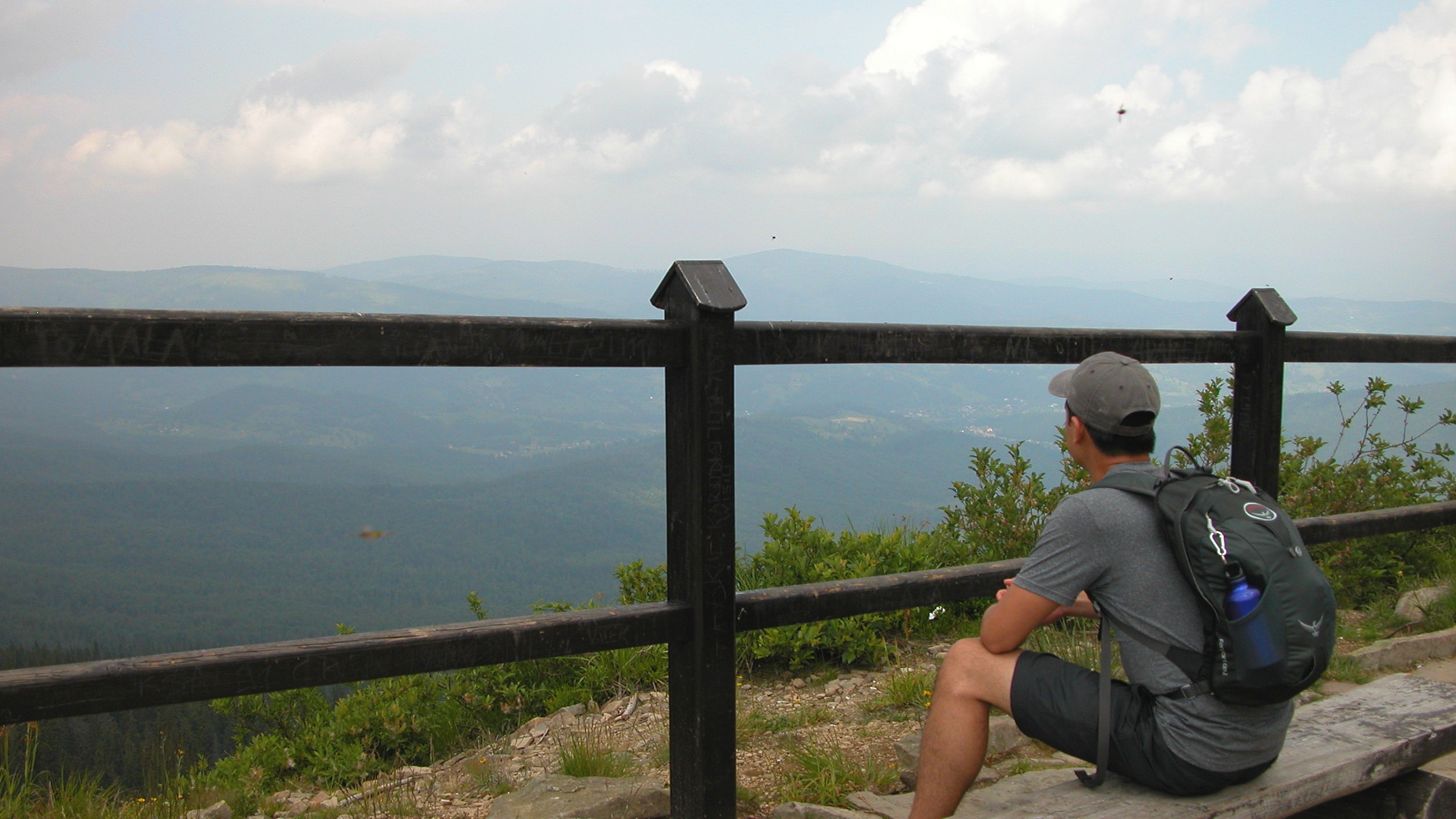
Tatra architecture style although looking as local and country in reality is an artificial architecture created by one man: Stanislaw Wikiewicz Polish writer, painter who was living in Zakopane. He was born in Lithuania [Samogita] in a noble family of Polish/Lithuanian origin in old Republic sense. His father took part in one of antiRussian uprising and was sent to Siberia. His family went with him. He as a boy in his teens walked along Transiberian rail back to Poland [or better say partition Poland] and at the end settled in Zakopane, which was then in Austrian part of Poland. There he created this quite unique style of architecture. There are some elements of Lithuanian architecture in it [f.e that sun with rays]. Stanisław Witkiewicz is also known that he is a father of more famous Stanislaw Witkiewicz “Witkacy” writer, painter, philosopher, playwright, novelist, and photographer. His son was a genius and some westerners who known him say so. He is compare to f.e Beckett or Ionesco and he created much earlier then them.
Thank you for your in depth explanation of the Zakopane architecture and its creator. The buildings in Poland have such rich history and visiting them has been one of the highlights of our trip. Not only were the structures incredible to look at, the stories of the people responsible such as Stanislaw Wikiewicz and his son Witkacy are important in understanding Poland’s past. I will definitely read more about Witkacy’s work.
Witkacy is an exceptional guy. After suicide of his first love he decided to go with later famous anthropologist Bronislaw Malinowski on an expedition as a photographer on one of the Pacific Inlands. They studied “sexual life of savages”?!?! When the 1st war started Witkacy left Malinowski and join Russian Tsarist Army as an officer [he was Russian subject] to his father anger and all his anti Russian family tradition. He went through Russian Revolution on the Whites side living through his and the Russian tsarist army decadence and through the fall of Tsarist Empire and in some way of civilization. It haunted him all through the life. It was mirrored in his plays and works. He was something like Orwell in “1984” but much, much earlier. When the 2nd World War started and Hitler Germany attacked Poland he run away to the east part of Poland with a girl [lover??]. Hearing that on the 17th of September 1939 Communist Russia attacked Poland from the rear and knowing communist paradise from inside he and his lover took poison. He died, she was saved. He was buried in the small village where he died. Many years after he was “ exhumed ” and once more buried with panoply with all officials in Zakopane. As later was prove it was not his body but some peasant woman and all the ceremony was one big scam and his last absurdist joke.